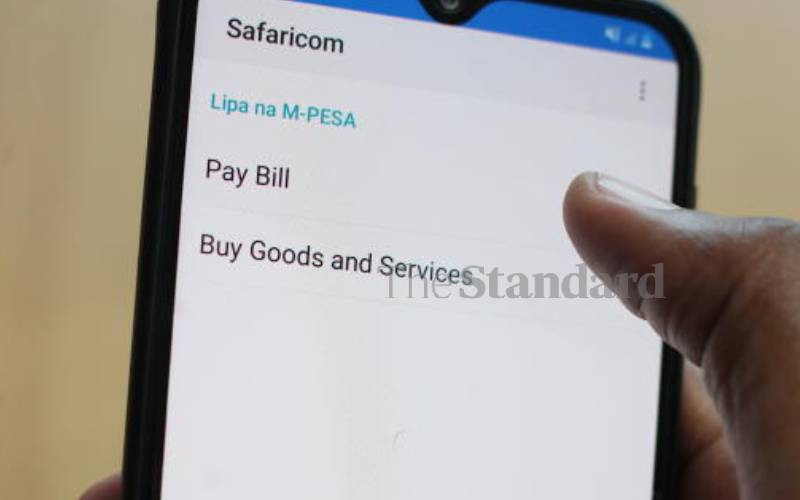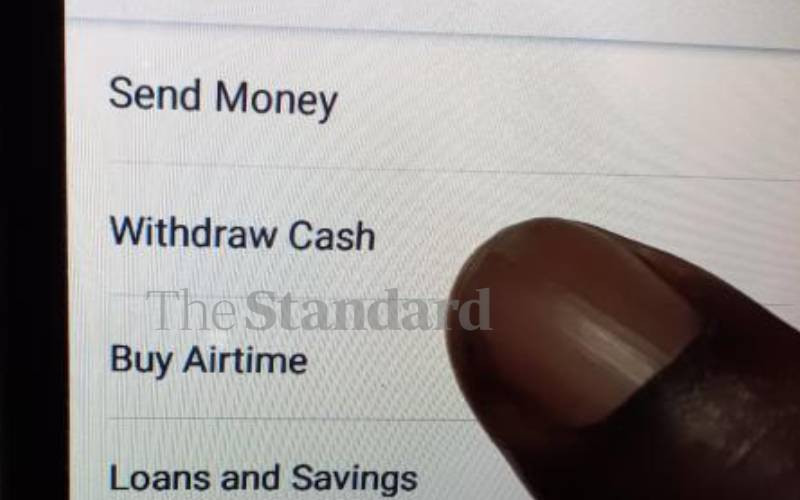The leading telecommunication firm Safaricom announced its annual financial report this week, with net profit of Sh38.1 billion.
This is nearly double the Sh19.6 billion posted by the second most profitable firm, KCB.
Safaricom mobile platform transacted Sh5.3 trillion during the year, which is more than our national budget.
Kenya has 68 per cent mobile payment absorption, South Africa has 29 per cent while world has 11 per cent. This shows Kenyans have come to embrace mobile money transfer as a way of making financial transaction.
Developing countries are severely constraint by the physical infrastructure of the financial institutions. This means that a large part of its population is excluded from the formal banking system.
Kenya has just 1,000 bank branches and 2,510 ATMs that are certainly not sufficient for its 40 million people.
M-Pesa, with its 101,000 agents, is much more accessible to an ordinary Kenyan. M-Pesa helped Micro Finance Institutions (MFIs) to go deeper into remote areas very quickly without substantial increase in the costs.
When the poor get access to financial services, their cash flow management gets better, their financial planning is enhanced and their savings are increased.
Mobile money has brought many unbanked customers under the formal financial system.
Mobile Money Transfer platform is instrumental in substituting the banking infrastructure. In most of the emerging markets, the mobile phone penetration far outnumbers the bank account penetration.
In the absence of formal banking system, most of the transactions are cash-based, giving no audit trail to the regulators.
Mobile money brought in the transparency in the money transactions by reducing the cash economy and digitising the transactions. Mobile money is equivalent of credit card or debit card which allows the regulators to monitor the trail.
There is more visibility on the money flows as the remittances move from informal channels to formal channels.
Many people in emerging economies have to travel far from home to find work and need to be able to send money back to their families so they can pay bills.
It has been observed that mobile money users make fewer trips back home to physically deliver money. Unlike banks, the mobile money service is accessible 24/7 and money can be sent anytime, anywhere.
Stay informed. Subscribe to our newsletter
Mobile technology can lower the cost of remittances as it removes the need for physical points of presence and ensures a timely and secure method of transaction.
 The Standard Group Plc is a
multi-media organization with investments in media platforms spanning newspaper
print operations, television, radio broadcasting, digital and online services. The
Standard Group is recognized as a leading multi-media house in Kenya with a key
influence in matters of national and international interest.
The Standard Group Plc is a
multi-media organization with investments in media platforms spanning newspaper
print operations, television, radio broadcasting, digital and online services. The
Standard Group is recognized as a leading multi-media house in Kenya with a key
influence in matters of national and international interest.
 The Standard Group Plc is a
multi-media organization with investments in media platforms spanning newspaper
print operations, television, radio broadcasting, digital and online services. The
Standard Group is recognized as a leading multi-media house in Kenya with a key
influence in matters of national and international interest.
The Standard Group Plc is a
multi-media organization with investments in media platforms spanning newspaper
print operations, television, radio broadcasting, digital and online services. The
Standard Group is recognized as a leading multi-media house in Kenya with a key
influence in matters of national and international interest.









